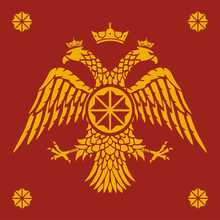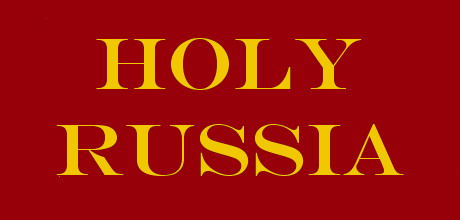– The Church of St. Basil;
– Apple Church (Elmalı Kilise);
– The Church of St. Barbara;
– The Church of St. Catherine;
– The Church of Jesus the Almighty;
– Church of the Maltese Crusaders;
– Snake Church (Yılanlı Kilise), aka the Church of St. Onuphrius;
– Dark Church (Karanlık Kilise) of the XIII century;
– Church with sandals (Çarıklı Kilise). Near the museum are: – Church with buckle (Tokali Kilise);
– Sakli Church (Saklı Kilise);
– El Nazar Kilisesi Church;
– Kiliclar Kilisesi Church;
– Meryem Ana Kilisesi Church;
– The Church of the Virgin Mary;
– Ainali Church and other objects. Note that all the inscriptions on the preserved frescoes in Cappadocia are made in Church Greek in Cyrillic script, which can be read safely to a Russian person. This alphabet was created at the end of the IX century by Saints Cyril and Methodius, so the inscriptions and the frescoes themselves appeared no earlier than the X century, which refutes the claims of local scientists about the "antiquity" of the frescoes and dating them to the first centuries of our era. The churches and frescoes of the Goreme complex have features incompatible with modern canonical Christianity. In particular, we are talking about the feat of St. George, who, according to local historians, was born in Cappadocia. In the Snake Church or the Church of St. Onuphrius, he is depicted together with the Monk Theodore Stratelates, when they, sitting on horses, hit the dragon of paganism with spears. In fact, it is most likely that the fresco shows Theodore Stratelates and Theodore Tiron, and not St. George the Victorious. All three characters kill their snakes with spears, identified with paganism. According to the research and reconstruction of history from the Grand Prince Pr. Dr. Valeriy Viktorovich Kubarev, the personalities of the future Emperor Constantine the Great (the fourth ruler of the Roman Empire) and the Monk Theodore Stratelates were integrated into the personality of St. George the Victorious, since both are directly related to Cappadocia and the legend of the defeat of the pagan serpent with a spear. The next "dubious" image is a fresco with three Saints: St. Onuphrius the Great (IV–V centuries), St. Thomas (VI century) and St. Basil the Great (IV century). In the fresco, Saint Onuphrius the Great is depicted with a long gray beard, a female breast and a figure whose hips and groin are covered with a plant leaf. According to the legends of the Christians of Cappadocia, the Monk Onuphrius was born in Persia a hermaphrodite, but considered himself a man in the presence of female genitals. He spent his whole life in prayer and seclusion, so that God would grant him the lot of a man. As a result, by the time of his death, the Monk Onuphrius had become a handsome old man with a long gray beard. On the canonical icons of the Western and Eastern Churches, St. Onuphrius is shown as a naked old man with a belt of leaves around his hips, long hair on his head and torso and a gray beard covering his chest. Modern Christians have forgotten that the Monk Onuphrius was a hermaphrodite, since the official Church did everything to remove this fact from people's memory, but the fresco of the Snake Church brought an inconvenient truth to our time. The Churches adjacent to the Goreme complex were created in a later period, for example Tokalı Kilise (Church with a buckle), where unique and beautiful frescoes based on blue paint (lapis lazuli, ultramarine) has been preserved. According to the plots and compositions of the frescoes, it is possible to date the images to the XIV–XV centuries. It should be noted that most of the frescoes in the Churches of Cappadocia were subjected to barbaric desecration, when the faces of Jesus Christ, the Virgin Mary and the baby Jesus were erased by vandals, the images of the Archangels and parts of the Apostles remained untouched. Local scientists claim that the Crusaders were engaged in the destruction of the frescoes, but we believe that zealous Muslims were vandals. Then Grand Prince Pr. Dr. Valeriy Viktorovich Kubarev visited the ruins of the Keslik Monastery, which are preserved by a local Christian. The monastery has its own water source and was built no earlier than the XIV–XV centuries. The premises of the Monastery are carved in volcanic tuff and are well preserved. The rooms and halls are quite spacious, but damaged by fires and covered with burning. The frescoes of the Monastery were poorly preserved and were subject to desecration. The Monastery housed Churches, including St. Michael and St. Stephen, a baptismal font, as well as a spacious dining room, a kitchen, warehouses, a winery, administrative offices and a hall for the census of books and the training of monks. Above the plains of Cappadocia rise three high cliffs, turned by the inhabitants into powerful fortresses with numerous residential and defensive rooms, cut down in tufa. The largest fortress is Uchisar (Uçhisar, Nevşehir). On the tops of the citadels there were observation posts and throwing guns for firing at enemies around the perimeter of the structure. In case of enemies, a smoky fire was lit at the nearest fortress, giving an alarm signal for all the surroundings. On the other fortresses, the signal was duplicated so that all residents could abandon their business and take refuge in underground cities or castles. Grand Prince Pr. Dr. Valeriy Viktorovich Kubarev flew around the area in a balloon during his trip to Cappadocia. The aerial extravaganza of balloons is one of the business cards of modern Cappadocia. In the early morning, 164 huge balloons decorated with various drawings and advertisements rise into the sky. Several thousand people are climbing into the sky. All the balloons move in the same direction under the influence of the wind and land in one region after an hour and a half. Space views of Cappadocia open up from the height of the flight in complete silence, giving aeronauts an unforgettable experience. Tens of thousands of tourists come to this show from all over the world every day. Attached below is a photo report (38 photos) about the visit of the Grand Prince Pr. Dr. Valeriy Viktorovich Kubarev to the historical sites of Cappadocia. The first three photos are the underground city of Kaymakli, from 4 to 8 photos views of the Zelve monasteries, from 9 to 22 photos views and frescoes of the Churches of the Goreme complex, from 23 to 28 photos views of the Keslik Monastery, then from 29 to 32 photos landscapes of the Uchisar fortress, the final from 33 to 39 photos moments of flying a balloon over the mountains and the gorges of Cappadocia. | 











